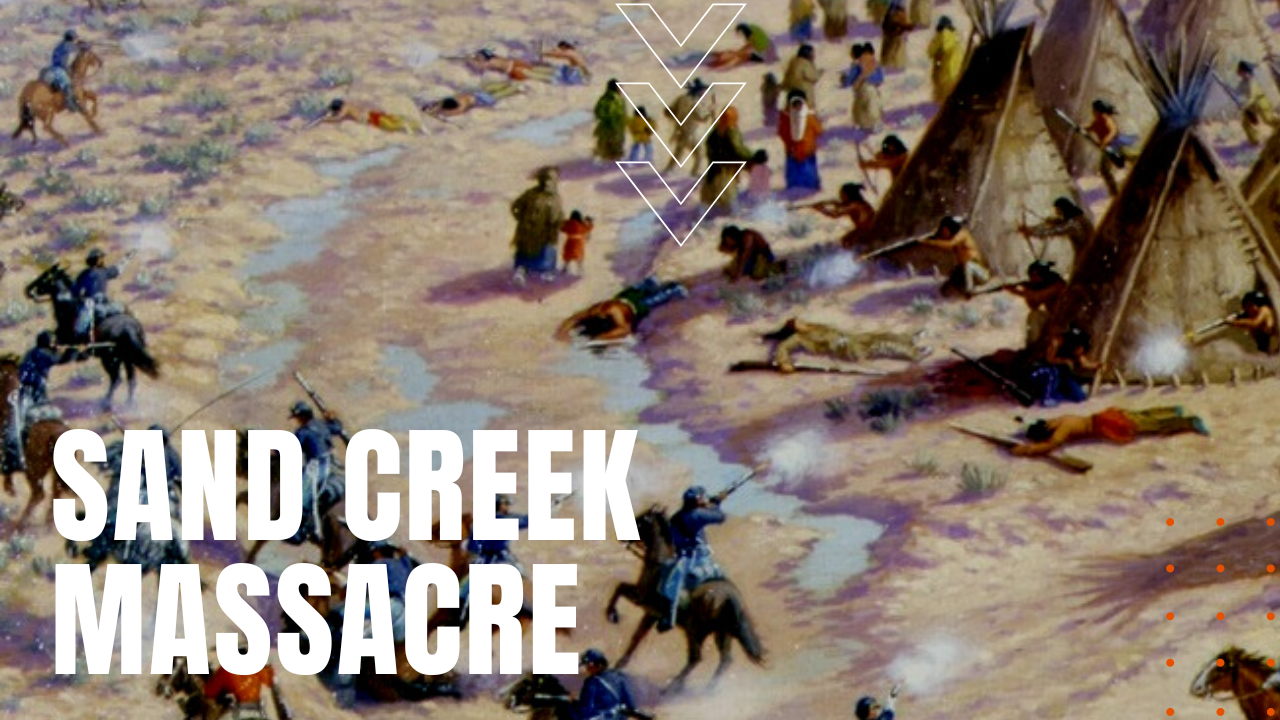Sand Creek Massacre

After the Fort Laramie Treaty of 1851 made lands north of the Arkansas River to the Nebraska border the exclusive domain of the Cheyenne and Arapahoe people, the treaty broke down when gold was discovered in the Colorado Territory in 1858.
By 1859, more than 100,000 Euro-American fortune seekers—known as “Fifty-Niners”—had poured onto Native American lands, ushering in a precipitous rise in hostilities by 1861.
In an effort to curb the violence, on February 8th of that same year, Cheyenne Chief Black Kettle and several Arapahoe leaders accepted the terms of the Federal government’s Treaty of Fort Wise, granting them 600 square miles of protected land to include a substantially-reduced reservation along the Arkansas River, to its northern boundary at Sand Creek.
Massacre at Sand Creek
In June of 1864, Governor John Evans of the Colorado Territory, along with Colonel John M. Chivington of the U.S. Army and Fort Lyon commanding officer, Maj. Ned Wynkoop encouraged Black Kettle and his people to move their village to Sand Creek.
Instead, in a bit of open treachery against Native Americans, at sunrise on November 29th, some 675 U.S. volunteer soldiers under Chivington’s command attacked Black Kettle’s Sand Creek encampment of some 750 Cheyenne and Arapaho people, employing small arms and artillery fire that slaughtered many of the villagers, particularly noncombatant women, children and the elderly.
Many who survived the initial attack fled across a dry creek bed and up a small rise, where soldiers shot at them as they struggled over sandy terrain. Those who managed to crest the small hilltop frantically dug pits and trenches to protect themselves, which drew further artillery fire over the next eight hours, leading to the deaths of some 230 Cheyenne and Arapaho people.
The following day, soldiers returned to the site of the massacre, committing further atrocities on the dead before departing on December 1st to resume their campaign. In 2000, copies of letters from Captain Silas Soule and Lieutenant Joseph Cramer were found in Denver, offering firsthand accounts of the massacre, which revealed that more than 100 men of the attacking U.S. volunteer soldiers stood in moral resistance to their orders, making the Sand Creek Massacre, one of the darkest days in Native American history.
